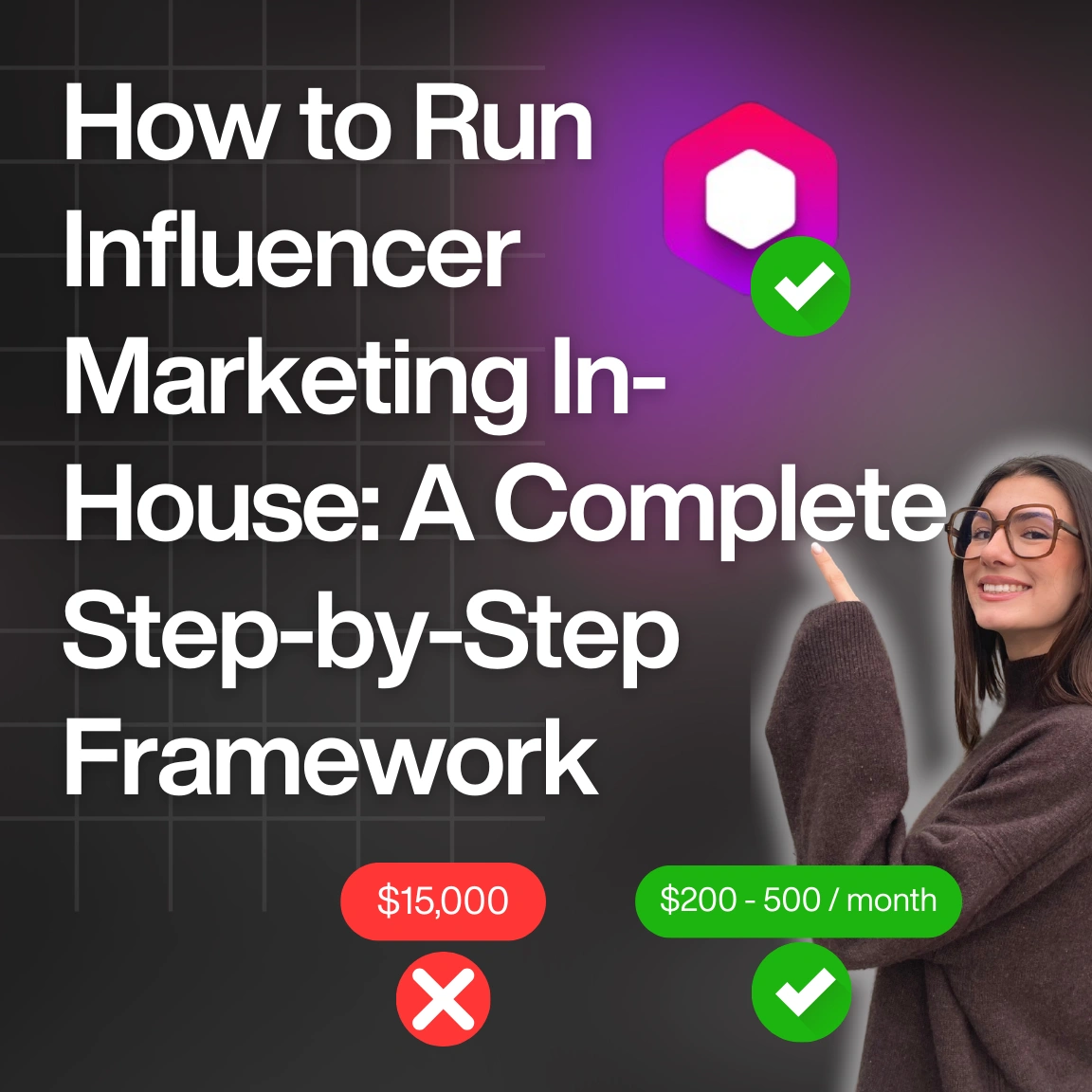Blog & Articles
Your ultimate ressource for the creator economy
Methodology & Rankings
About Favikon, rankings, tools & much more.
Insights
The recipe behind Favikon's viral & coveted rankings.
Free tools to power your influencer marketing workflows.
See Favikon users' success stories.
Get access to all Favikon rankings.
Become a Partner
Become an Affiliate
About the team behind Favikon
The place to talk creator economy, together


Featured Rankings

Here is the Top 50 Rising Video Creators on LinkedIn. Video is quickly becoming the platform’s most powerful format, with creators gaining more reach and engagement than ever. As Gen Z grows its presence and tools like BrandLink and Thought Leader Ads support content creation, LinkedIn is doubling down on video. This ranking, made in partnership with OpusClip, celebrates the creators leading this shift and aims to inspire anyone ready to start sharing through video.

Here is the Top 50 Rising Video Creators on LinkedIn. Video is quickly becoming the platform’s most powerful format, with creators gaining more reach and engagement than ever. As Gen Z grows its presence and tools like BrandLink and Thought Leader Ads support content creation, LinkedIn is doubling down on video. This ranking, made in partnership with OpusClip, celebrates the creators leading this shift and aims to inspire anyone ready to start sharing through video.
What is B2B SaaS Marketing?
B2B SaaS marketing is a specialized form of marketing aimed at promoting software-as-a-service (SaaS) solutions to other businesses. Unlike traditional B2C marketing, it focuses on long sales cycles, targeting decision-makers, and conveying the unique benefits of a software solution to solve business-specific challenges.



Sarthak Ahuja is a marketing enthusiast currently contributing to digital marketing strategies at Favikon. An alumnus of ESCP Paris with over 2 years of professional experience, he has held multiple marketing roles across industries. Sarthak's work has been published in journals and websites. He loves to read and write about topics concerning sustainability, business, and marketing. You can find him on LinkedIn and Instagram.
Check Brand DealsWhat is B2B SaaS Marketing?
B2B SaaS marketing is a specialized form of marketing aimed at promoting software-as-a-service (SaaS) solutions to other businesses. Unlike traditional B2C marketing, it focuses on long sales cycles, targeting decision-makers, and conveying the unique benefits of a software solution to solve business-specific challenges. Below is a comprehensive guide to understanding and implementing successful B2B SaaS marketing strategies.
B2B Marketing can be a challenging task given complexity of channels available. A report by Profitwell by paddle reported 2023 to be the toughest year for B2B SaaS witnessing a sharp decline in MRR (Monthly Recurring Revenue).

Therefore, it is crucial for B2B marketers to be fully aware of the various options and channels available in the highly competitive B2B landscape. To achieve success in B2B marketing, one must be adept at leveraging these options effectively.
Key Components of B2B SaaS Marketing
Understanding Your Target Audience
The first step in any marketing strategy is to understand your audience. For B2B SaaS, this involves segmenting your audience based on factors such as industry, company size, job role, and specific business challenges. This allows for more personalized marketing efforts, ensuring your message resonates with the right decision-makers.
Example: If you’re marketing HR software, your target might include HR managers at mid-sized companies. Understanding their specific challenges—like onboarding, compliance, or employee engagement—can help tailor your messaging.
B2B Influencer Marketing
B2B influencer marketing is crucial for B2B SaaS marketing because it leverages the credibility and reach of industry experts to build trust and awareness. SaaS solutions often involve complex products, and decision-makers are more likely to trust recommendations from influencers who understand the industry and can explain the benefits clearly. These influencers can create authentic content, such as demos, webinars, and reviews, which helps simplify the product’s value proposition, shorten sales cycles, and reach niche audiences more effectively than traditional advertising.
Learn more about the benefits of B2B Influencer Marketing in this dedicated article
Content Marketing and Thought Leadership
Content marketing is a core element in B2B SaaS. Creating blogs, whitepapers, webinars, and case studies helps establish your brand as an industry expert. High-quality, informative content builds trust and educates your audience about how your software can address their pain points.
Example: Platforms like HubSpot excel in this by offering free resources (eBooks, courses) that educate users on marketing strategies, subtly introducing their software as the solution.
Product-Led Growth (PLG)
In B2B SaaS, showcasing the product’s value early is essential. PLG focuses on letting the product sell itself. This can be done through free trials, freemium models, or interactive demos. It gives potential customers a hands-on experience, allowing them to see the value first-hand before committing. Here are the top 5 PLG influencers worldwide:

Example: Slack’s freemium model lets teams use core functionalities for free, driving adoption and encouraging upgrades once they see the software’s impact.
Search Engine Optimization (SEO)
SEO ensures that your product gets discovered when businesses search for solutions online. Focusing on relevant keywords, optimizing content, and building backlinks will drive organic traffic, making your SaaS offering visible to businesses actively seeking solutions.
Example: For a SaaS specializing in CRM, keywords like “best CRM software for small businesses” or “automated CRM solutions” will help attract targeted leads.
Find out about the top SEO influencers in this dedicated article
Paid Advertising and Remarketing
Paid advertising, particularly on platforms like Google Ads and LinkedIn, can help target specific businesses and professionals. Remarketing ads are especially effective in B2B, where the sales cycle is longer. These ads remind prospects who have interacted with your brand, nudging them further down the sales funnel.
Example: Monday.com uses Google Ads to capture traffic from businesses searching for project management tools, emphasizing features that appeal to teams of different sizes.
Half of US B2B marketers say that email marketing is the channel that has the biggest impact on their multichannel strategy, outpacing social media (33%) and content marketing (26%), per April 2023 Ascend2 and Zoominfo data.

This does not necessitate that marketers should adopt email marketing as their flagship strategy. Depending upon the target audience and market, different channels may offer very different ROI than expected or as per observed market trends.
Marketing Funnel for B2B SaaS

Image Source: NotScheduled
Top of the Funnel (TOFU)
At this stage, the goal is to attract and inform. Focus on creating awareness about your product through educational content, blog posts, and social media engagement. The objective is to drive traffic and establish a connection with potential customers.
Example: Offering a free eBook on “The Future of Cloud-Based Solutions” can attract businesses just beginning their research.
Middle of the Funnel (MOFU)
Once you have their attention, guide them further down the funnel with product demonstrations, webinars, or case studies. Content at this stage should build trust, demonstrate authority, and showcase how your SaaS can solve specific issues.
Example: Hosting a webinar on “How Our Tool Can Improve Your Sales Process by 30%” can directly address the needs of your target audience.
Bottom of the Funnel (BOFU)
The final stage is converting leads to customers. This is where free trials, demos, and direct consultations play a vital role. At this stage, sales teams often engage directly to address specific questions and negotiate deals.
Example: Offering a 14-day trial or scheduling a one-on-one demo can give businesses the confidence to make a purchase.
Measuring Success: Key Metrics for B2B SaaS Marketing
Customer Acquisition Cost (CAC)
Understanding how much it costs to acquire a new customer helps in assessing the efficiency of your marketing strategy. Lowering CAC while maintaining growth is a key indicator of success.
Example: If a marketing campaign costs $10,000 and results in 10 new customers, the CAC is $1,000.
Customer Lifetime Value (CLV)
CLV indicates the total revenue a customer can bring over their entire relationship with your company. A high CLV justifies higher marketing spend, while a low CLV indicates a need for customer retention strategies.
Example: Companies like Salesforce focus heavily on customer success and support, ensuring clients stay long-term, increasing CLV.
Conversion Rate
The percentage of leads that turn into paying customers is critical in evaluating your marketing funnel’s effectiveness. Improving conversion rates often involves A/B testing landing pages, offers, and calls-to-action (CTAs).
Example: Zoho may track how many trial users convert to paying clients and refine the trial experience to optimize this number.
Best Platforms for B2B SaaS Marketing
LinkedIn is the leading platform for B2B marketing, allowing brands to target professionals based on job title, industry, and company size. It’s also a great platform for content marketing and thought leadership.
Example: Companies like Drift use LinkedIn to share case studies, webinars, and product updates, ensuring their content reaches decision-makers.
Google Ads
Google Ads allow precise targeting based on search intent. Businesses actively seeking solutions can be driven directly to landing pages designed to convert them into customers.
Example: HubSpot uses Google Ads for targeting keywords related to marketing automation and CRM tools, positioning themselves at the top of search results.
Webinars and Virtual Events
Webinars provide an opportunity to present your product’s features in-depth, answer real-time questions, and engage directly with potential customers. They are highly effective in B2B SaaS for lead generation and nurturing.
Example: Salesforce often hosts webinars on digital transformation, using them as a lead generation tool to demonstrate how their solutions can drive change.
B2B SaaS marketing is a dynamic field requiring a mix of digital marketing strategies tailored to meet the needs of businesses. By understanding your audience, building trust through content, leveraging SEO, and using data-driven insights, you can craft a marketing approach that drives growth and long-term success. As the market evolves, embracing trends such as AI, automation, and personalization will be crucial for staying ahead.
Investing in comprehensive marketing strategies, like product-led growth and paid advertising, ensures that your SaaS solution stands out in a competitive market, capturing the attention of the right businesses at the right time.
You might also find interesting:
The Ultimate Guide to B2B Influencer Marketing
5 reasons to use Influencer Marketing Tools
The different types of influencer marketing campaigns
How are B2B Influencers Paid?
How to find B2B influencers?
What is B2B Social Selling
Related Articles
See all the articlesResources











.png)









